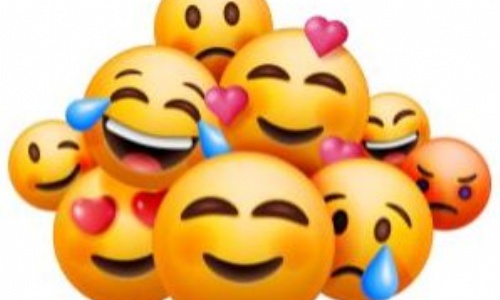Understanding Teen Emoji Language: A Guide for Parents to Keep Children Safe Online

posted by Kelly Lancaster, EA (Central Team at Schools for Every Child)
Like many parents, I recently watched Adolescence on Netflix; not really sure what to expect turned into binge watching all four episodes back to back and it was one of those programmes that sparked conversation in our house on whether we really do enough as parents to keep our children safe both physically and mentally. We could probably all do more to understand how our children are communicating as the thing I found most interesting was the 'coded language' of using emojis which highlighted my personal ignorance of just thinking that a heart emoji is just a heart emoji...
In today’s digital world, teenagers are using emojis as a form of coded language on social media, texting apps, and online forums. While most emoji use is harmless, some symbols carry hidden meanings that parents should be aware of, especially when they relate to risky behaviours such as substance use or inappropriate online interactions.
I hope this guide will help parents understand how emojis are being used by teens, what they might mean, and how we might foster healthy conversations about online communication.
Common Emoji Meanings in Teen Slang
General Expressions:
(Fire) – Cool, awesome, or attractive
(Skull) – “I’m dead” (used when something is extremely funny)
(Laughing Face with Tears) – Something is hilarious
(Eyes) – Paying attention or something suspicious
(Clown) – Someone being foolish or embarrassing
Friendship & Relationships:
(Red Heart) – Love or deep friendship
(Blue Heart) – Platonically caring about someone
(Purple Heart) – Could indicate romantic interest but also used in fan culture (e.g., K-pop fans)
(Black Heart) – Dark humour or expressing sadness
(Fingers Crossed) – Hopeful, but sometimes used for unclear or unofficial relationships
Potentially Risky Meanings:
Some emojis can be used to refer to drug use, alcohol, or risky behaviour. While their meanings can vary, here are a few commonly recognised ones:
(Leaf) or
(Herb) – Marijuana
(Pill),
(Clinking Glasses),
(Champagne Bottle) – Drugs or alcohol
(Electric Plug) – A drug dealer or supplier
(Rocket) – Getting high or taking drugs
(Hourglass) – “Time is running out” (can refer to body shape or urgency for risky behaviour)
Sexual Innuendos:
Some emojis have become widely used as symbols for body parts or sexual content:
(Peach) – Buttocks
(Eggplant) – Male genitalia
(Taco) or
(Cherries) – Female anatomy
(Sweat Droplets) – Sexual activity or attraction
+
(Fire + Peach) – Suggesting someone has an attractive body
How Can Parents Keep Their Children Safe?
1. Stay Informed
Teen slang and emoji meanings can change over time, so it’s important to stay updated. Follow reputable online safety resources and stay engaged in digital trends.
2. Have Open Conversations
Instead of assuming the worst, ask your child what certain emojis mean to them. Creating a judgment-free space for discussion encourages honesty and trust.
3. Monitor the Context
Emojis on their own don’t always indicate a problem! Look at the full conversation before jumping to conclusions.
4. Use Parental Controls
Consider using parental control apps like Bark, Qustodio, or Apple’s Screen Time to monitor for concerning communication without invading your child’s privacy.
5. Encourage Safe Online Behaviour
Teach your child about digital responsibility, including:
• The risks of sharing personal information online
• How to recognise and handle peer pressure in digital spaces
• The importance of thinking before posting or messaging
I hope that you found this useful and if you just take away one thing, then that is that education and open communication are key to keeping children safe online.
If you would be interested in attending an online workshop for some more information on this subject, then please register your interest via email to info@schoolsforeverychild.org


